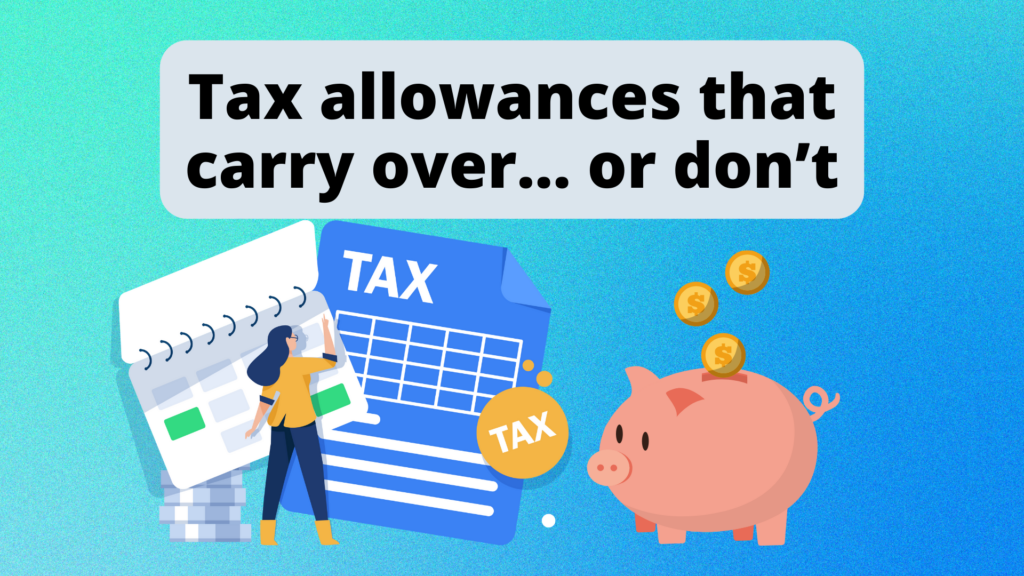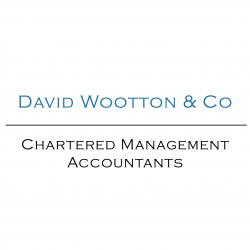Not all tax-free allowances disappear at the end of the tax year, which can help save you money. We explore those that do, and those that don’t.

Tax allowances that you can carry forward
1. Your pension allowance
You can pay 100% of your annual income into your pension up to a maximum of £60,000 a year. Those contributions are also boosted by tax relief at the same rate as your income tax.
And in fact, with carry-forward rules, you could pay in even more and still get a top-up, because you can also use any pension allowance left over from the last three tax years.
This year, then, you could pay into your pension and get tax relief on as much as £200,000. That’s based on two years with a £40,000 allowance, plus two years at the higher rate of £60,000 (this changed in 2023).
There are more rules and criteria involved, but this can be a helpful approach for higher earners who have a variable income, or people with a lump sum to pay into a pension.
2. Your inheritance tax gifting allowance
Cash gifts are considered ‘potentially exempt transfers’ from inheritance tax if your estate were to qualify. They become totally tax free if you live for seven years.
You can also give away up to £3,000 a year free of inheritance tax and, if you didn’t use last year’s allowance, you can carry that forward too. That means a couple that hasn’t gifted before could give away as much as £12,000 in one go.
Also, if your child is getting married, you can give them up to £5,000 tax free to mark the occasion. You can give £2,500 to grandchildren too, which could contribute towards a deposit for their first marital home.
3. Capital losses
Losing money on an investment is painful, but if you keep a record of losses and report them to HMRC, they could be helpful in the future.
While the capital gains tax allowance can’t be carried forward, investment losses can be – and you can offset use against capital gains to potentially reduce your bill.
Don’t worry if you haven’t reported losses from previous years, because HMRC gives you four years to report a loss.
Allowances that disappear if you don’t use them
1. Capital gains tax allowance
Under your capital gains allowance, you can keep some investment profits each year tax-free, although the allowance has shrunk a lot – in just two years it has dropped from £12,300 to £3,000.
Because the allowance is now small, it pays to be strategic in how you benefit from your investments. It’s now less appealing to let your gains pile up.
Imagine you make around £500 a year on an investment. If you let this accrue and sell the investment after 10 years, your gain could be £5,000. You would have to pay tax on £2,000 of that gain.
Instead, you could take advantage of the annual allowance, selling a portion of the shareholding annually. If each sale was under the annual exempt amount, you wouldn’t lose out to capital gains tax.
2. The dividend allowance
Dividends are taxable too and, like capital gains, this allowance has also been cut in recent years. It currently stands at £500 a year.
The tax is 8.75% for basic-rate taxpayers, 33.75% for higher-rate and 39.35% for additional rate.
Married couples could transfer assets between each other and use both sets of allowances to reduce their exposure to the dividend tax.
Another helpful option is to make the most of both your ISA and pension allowances to grow your money tax free.
3. ISA allowance
Money kept in individual savings accounts (ISA) is fully protected from tax. There’s no tax on interest or dividends, or when you take money out.
So, it really does make sense to use your £20,000 ISA allowance each year. You can’t carry this forward.
Married couples can effectively amass £40,000 a year tax free between them. If you still have spare cash beyond that, you could pay into a Junior ISA for a child or grandchild too. This has a £9,000 allowance.
Want to explore how to minimise the tax you pay? Get in touch – as Lune Valley tax specialists and accountants we can help you assess the most tax-efficient way to manage your money.

